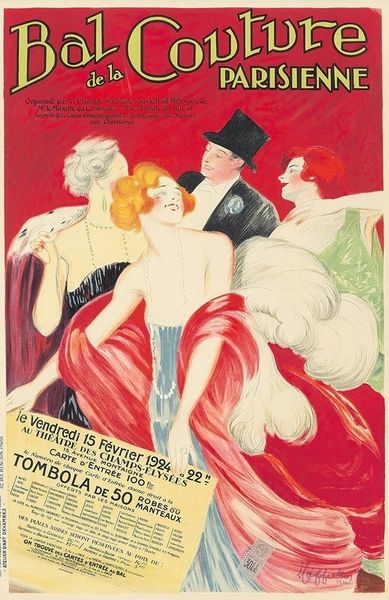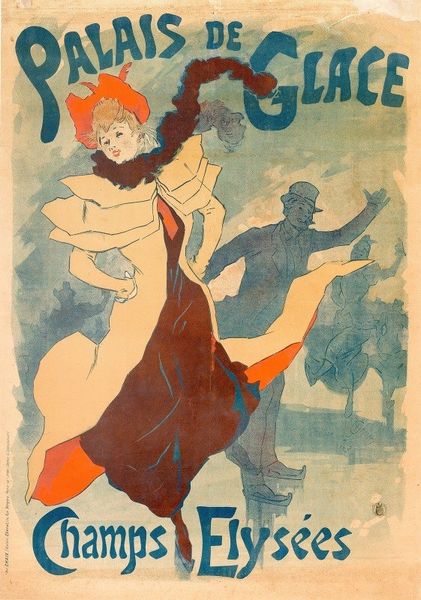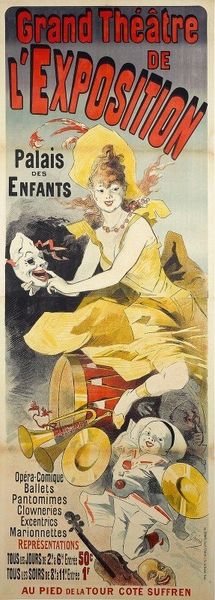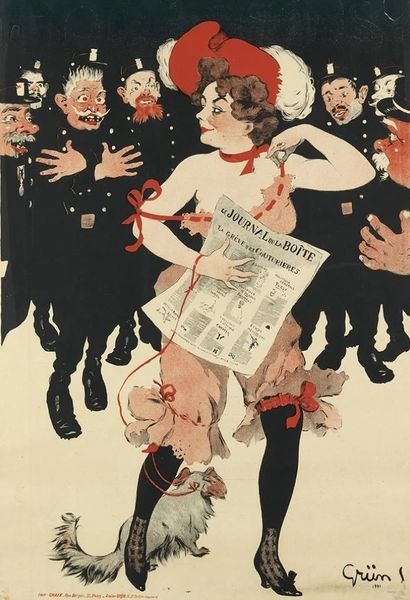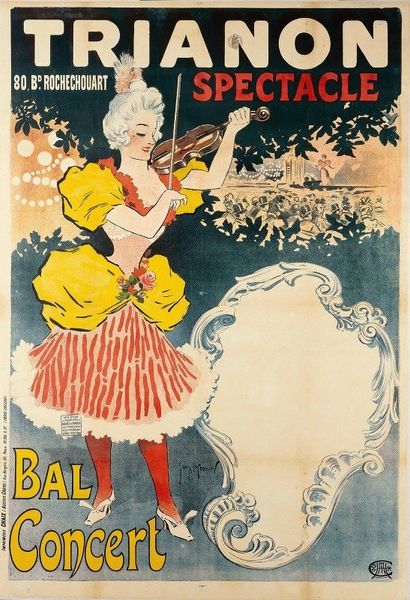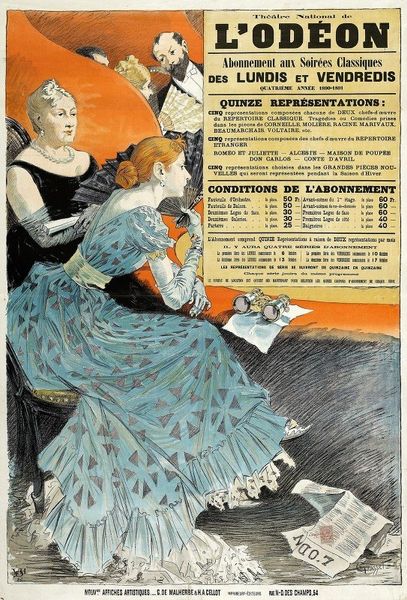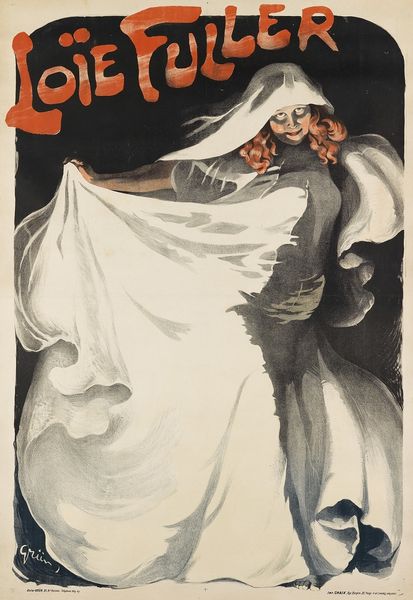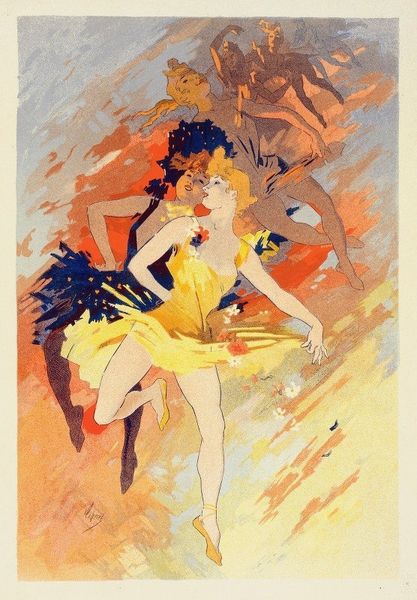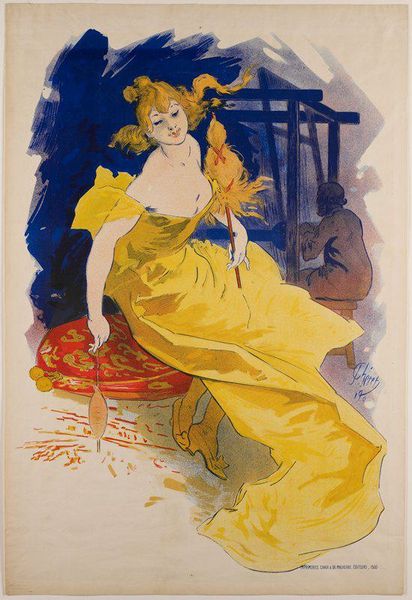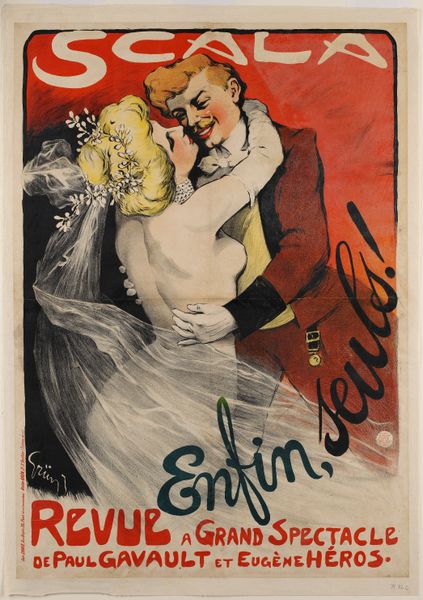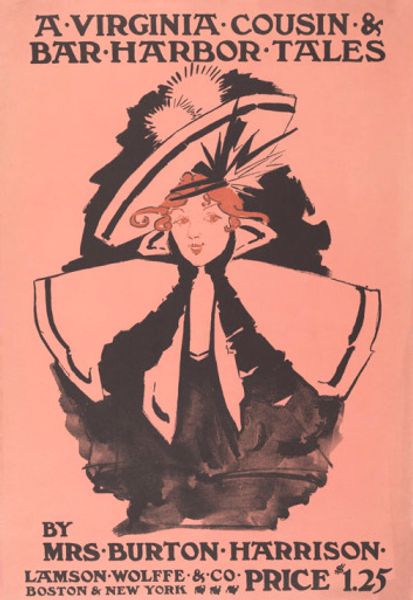
lithograph, painting, poster
#
art-nouveau
#
lithograph
#
painting
#
impressionism
#
figuration
#
cityscape
#
poster
Copyright: Public domain
Editor: This vibrant lithograph is "Moulin Rouge, Paris, Cancan" by Jules Chéret, from 1890. It immediately strikes me as a joyous, almost chaotic celebration of Parisian nightlife. What symbols and underlying meanings do you observe here? Curator: Indeed, it's fascinating how Chéret uses symbolism to create such a layered impression. The Moulin Rouge itself, signified by that prominent red windmill, wasn't just a building; it represented a particular kind of liberation and spectacle for the Belle Époque. It served as a backdrop and stage for the drama of human relations in ways previously considered illicit. What about the female figure - what emotions are transmitted through her representation? Editor: I notice the dancer's confident, almost mischievous gaze. Her pose, and even her slightly revealing dress, speak to a newfound freedom of expression for women. The smaller, almost ghostly images below, almost seem to whisper gossip and scandal. Curator: Precisely! And those fleeting sketches further enhance the symbolic value: Consider how Chéret uses a flattened space – no depth, a limited color palette– like Byzantine icons where stylistic simplification served to amplify the potency of the symbolic message. Can we thus read her confidence as symbolic of something larger than just herself? Editor: Perhaps the overall societal shift toward embracing the arts and popular entertainment. It feels almost propagandistic, announcing to all who look that pleasure is not only acceptable, but can be acquired nightly with a fifty-piece orchestra! Curator: You have grasped its multi-layered character: a poster advertising a particular location. Also, it evokes how images construct identity, project aspirations, and tap into deeply rooted cultural values concerning class, gender, and transgression. This, as cultural memory. Editor: I had not looked at it like this, but seeing beyond the surface into what these figures stand for, not just in Parisian life but perhaps human experience, has broadened my view of the artist’s message and achievement. Curator: Agreed, that looking beyond the superficial informs the enduring appeal of Cheret's style: we have unlocked yet another symbolic mystery of representation and experience!
Comments
No comments
Be the first to comment and join the conversation on the ultimate creative platform.
